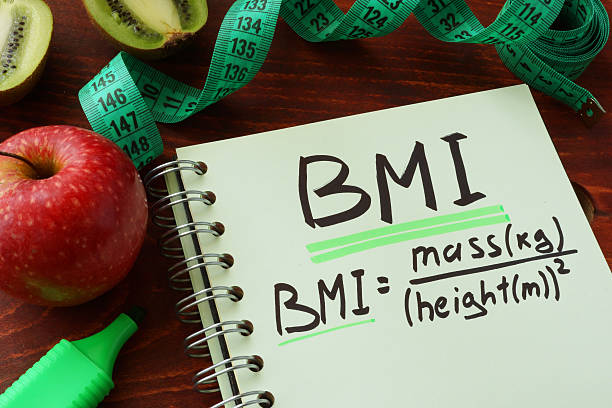BMI Calculator
Imagine a world where you can’t know how healthy your body is. You have to guess what the numbers on the scale mean for your health. And you have no idea if they’re going up or down.
That was a reality until 1832 when a Belgian mathematician named Adolphe Quetelet came up with BMI (Body Mass Index) calculator. It determines whether people are overweight or underweight by using an individual’s height and weight.
Now it’s 2021, and we still need this calculation because not everyone knows their BMI number. And that means they might be at risk of obesity-related diseases like heart disease, diabetes, cancer, stroke, and high blood pressure!
Contents
What Is BMI Calculator
BMI calculator is an instrument that helps you to calculate how your body weight relates to height. There are various formulas for this calculation.
Such as one developed by Belgian mathematician Lambert Adolphe Jacques Quetelet in 1832. And then this formula was then modified in 1972 by USA mathematician Broca and BMI calculator has been used since.
The BMI calculator uses either your weight in kilograms or pounds multiplied by the square of your height to determine if you are overweight, underweight, obese, healthy weight range.
It is not perfect but it does give a good estimate for determining whether someone’s body fat percentage is in an unhealthy range. The calculation is only meant for adults (age 18 and older).
Why Use BMI
The main reason for using the BMI calculator is to find out whether there are increased risks of chronic diseases associated with either being underweight, overweight, or obese.
Thus, people who are at risk must be aware of the problem and plan their nutrition accordingly. If you have a healthy weight then it’s ok but if not, then you should take a step towards a healthy diet and lifestyle.
How To Take Measurements On BMI
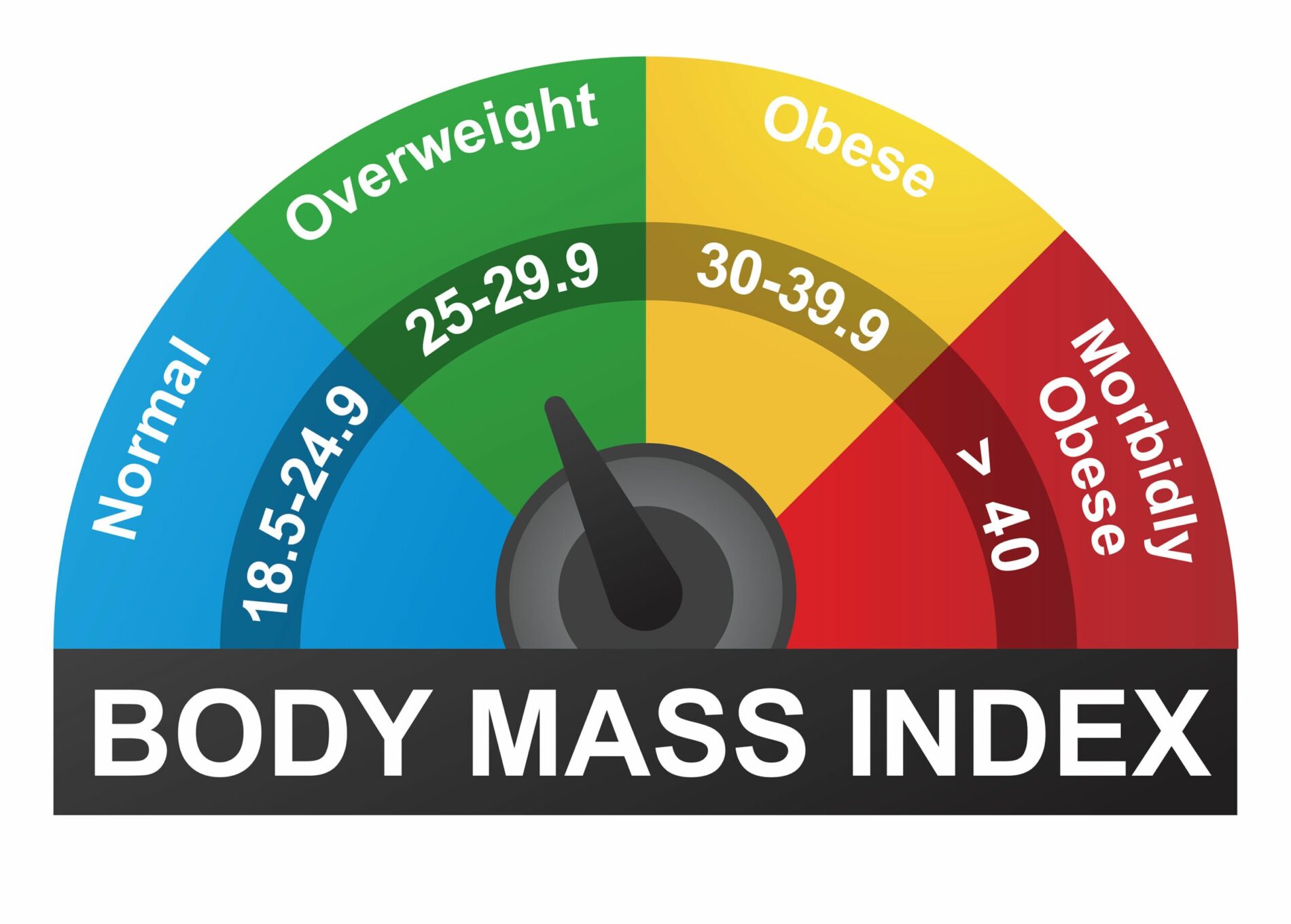 There are several ways to determine BMI. Though it is recommended that you do not take your measurement. Instead, ask a doctor or nurse for an accurate reading.
There are several ways to determine BMI. Though it is recommended that you do not take your measurement. Instead, ask a doctor or nurse for an accurate reading.
Steps To Take BMI Measurement
- Find your height and weight using a tool like our online calculator.
- Determine whether you are more at risk of being overweight or underweight by checking out the categories on the chart BMI for adults, children, and teens.
BMI Formula
The body mass index formula can be expressed in terms of kilograms and meters, or pounds and inches. The formula used by scientists to calculate body mass index is:
Weight (kg) / Height (m) squared
Ponderal Index
The Ponderal index was developed by a French physician named Louis-Antoine Ranvier. It indicates the weight of an individual relative to their length. It looks like this:
(Weight In Kilograms * 100 / Height In Meters)
Bmi Chart for Adults
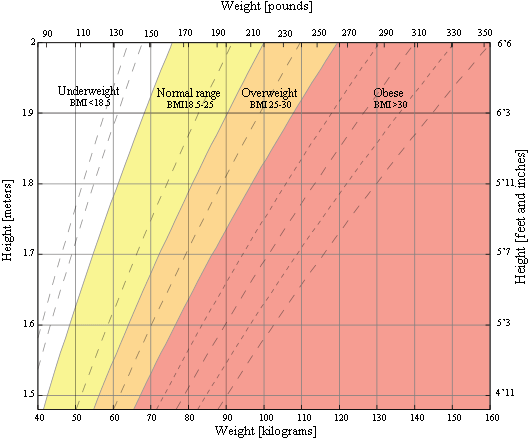
A person’s body mass index is determined by height and weight. The BMI chart helps you determine if your current weight is healthy or not. Your BMI score ranges from:
- Underweight
- Normal range
- Overweight
- Obese levels
It depends on the number that results after calculation of a person’s height and weight in kilograms.
BMI Table For Adults
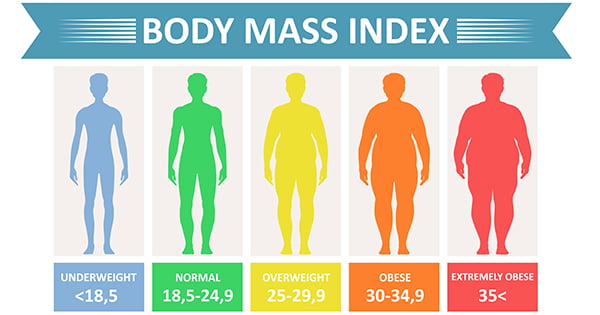
The BMI table determines if you are overweight or underweight. It is based on your height and weight with a measurement tool called percentiles. You can use the chart below for an estimate of where you are on the scale. But it is only an estimate.
BMI Formula
The BMI for adults is calculated with this simplified equation:
Weight [kg] /( Height [m]) ^ (Raise to the power of two of Height)
Bmi Chart For Children/Teens
A child’s body mass index doesn’t mean as much as an adult’s because they are still growing. Kids and teens need some fat for normal growth, but they should not have a lot of it. Teens that are overweight or obese may end up being anorexic or bulimic because of peer pressure to be skinny. It can lead to serious health problems in the future such as high blood pressure, type-two diabetes, and high cholesterol.
BMI Table For Children/Teens
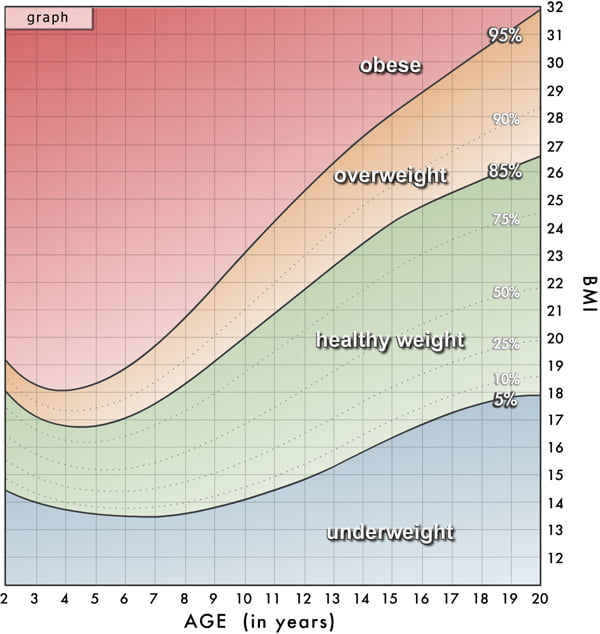
It is important to note that the BMI chart may not be accurate in children or teens. Because it does not take into account bone structure. The calculation also assumes there are no muscles. It can make a child appear overweight even though they are very healthy. In addition, children and teens tend to have a higher body fat percentage (calculated in percentile) as they are growing which is normal.
BMI Formula
The BMI for children and teens can also be calculated with this equation:
Weight [kg] /( Height [m]) ^ (Raise to the power of two of Height)
NOTE: When you square a number and raise it to a power, the result is always positive.
What Is An Ideal Weight
A normal weight will help ensure that you have a better balance of cholesterol and blood pressure levels which can lead to a reduced risk for heart disease in later life.
However, there is no “ideal” weight for everyone because there are many factors that determine whether someone may be at risk of being overweight or obese.
You should take into account their height & gender, how fat is distributed in the body, ethnicity, age, lifestyle choices such as smoking cigarettes or drinking alcohol daily.
Risks Associated With Being Overweight Or Underweight
BMI determines whether you fall into the healthy weight range based on your height and gender alone. But it’s important to remember that it doesn’t take into account how much muscle or fat you have.
Underweight BMI
If your BMI is underweight, meaning below 18.50, talk to a doctor about whether this may be caused by an eating disorder. But if the cause of low weight is due to malnutrition or starvation, then taking action immediately can prevent serious health problems.
Overweight BMI
If your BMI is overweight or obese, meaning above 25-30, then you’re at greater risk for many different diseases and health conditions. Such as:
- Diabetes
- High Blood Pressure
- Heart Disease
- Gallstones
- Liver And Kidney Disorders
- Sleep Apnea
- Osteoarthritis
- Infertility
- Depression
- Stroke
Therefore, pick the right weight loss program to help you achieve the ideal BMI.
NOTE: With a BMI greater than 40, known as class III obesity.
Limitations Of BMI
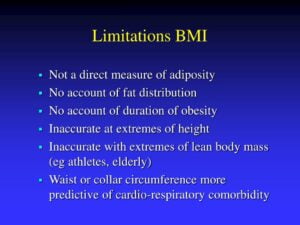
There are some limitations in using BMI calculators. Such as it does not take into consideration:
- It doesn’t distinguish between muscle mass and fat. So someone who is very muscular may have a high BMI which doesn’t necessarily mean they are overweight.
- It also can’t determine where fat is located in the body. For example, if it’s around your waist or hips. Now, this could affect predicting insulin resistance and cardiovascular risk.
- It is also limited when used for children/adolescents or adults that have chronic health conditions like heart disease, cancer, etc.
- Also, it is silent on determining the bone density and physical fitness level of an examined individual.
Other Factors To Be Taken Into Consideration
This is why a health care provider would take into account other factors to determine whether someone is at risk for developing chronic diseases. Such as:
- Family History,
- Daily Activities,
- Eating Habits, and
- Physical Activity Levels
Results
The results of this calculation depend on the person’s age, gender, and whether you are a child/teenager or an adult. There is also a difference between children, adolescents, and adults as well as normal weight vs overweight vs underweight categories.
- The BMI chart for children and teens is different from the one used for adults. As kids grow at various rates they are most likely to have a higher proportion of lean muscle mass rather than fat tissue.
- The BMI chart of teenagers has lower cut-offs than the one for adults. There are also separate charts to determine if a child or teen falls underweight, normal weight, or overweight category.
- Adults, however, are categorized according to BMI cut-offs. The chart used for adults is also different from the one that they use for children and teens as it takes into account their average height.
Conclusion
The BMI chart is a tool that can be used to determine if someone needs medical attention. But it has some limitations such as the fact that muscle weighs more than fat. So an athlete may have a higher reading even though they are very healthy and fit.
In addition, older people tend to have a lower BMI score because they have lost muscle mass over the years. The calculation is only meant for adults (age 18 and older). So it may not be accurate in children or teens as noted above.
These are just a few of the many things you can do to live more healthily. We hope this blog post has helped you learn about how to calculate your BMI. If there is anything else we didn’t cover that you would like some help with, please feel free to reach out!
A Word From Mantra Care
If you are looking for more information on such topics or Diabetes treatment, Online Therapy, Hypertension, PCOS treatment, Weight Loss, and Physiotherapy, please visit mantracare.org or feel free to reach out to us at +91-9711118331 or email at contact@mantracare.org. However, you can also download our free Android App or IOS app.
However, here at Mantra Care, we have an incredibly skilled team of health care professionals and coaches. They will be happy to answer any questions and provide further information so you know what’s best for you for your unique needs.
